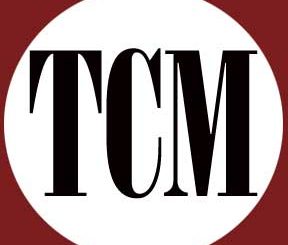
UPDATED STORY: The original version of this story, published in the Dec. 5 edition of The Miscellany, contained an error. St. Elizabeth Ann Seton Church in Mauldin (Simpsonville) is not receiving $2.6 million from the Bicentennial campaign. Rather, the funding is for the St. Elizabeth Ann Seton Catholic Education Endowment that provides scholarship money for schools in the diocese each year.
CHARLESTON—Next July, the Diocese of Charleston will begin a year-long observance of its bicentennial, celebrating 200 years of proclaiming the Word of God and building His kingdom in South Carolina and beyond.
Established in 1820, the Diocese of Charleston has grown from a smattering of Roman Catholics to 114 parishes and missions today, filled with more than 200,000 registered parishioners. And those numbers continue to climb.
“Our diocese is entering an era of significant growth,” Bishop Robert E. Guglielmone said. “People from all over the country and the world are choosing to make South Carolina their home.”
Many of those newcomers are Catholics. In order to help meet and serve that growth, the diocese has launched a $60 million Bicentennial Campaign.
“Having served as your bishop for nearly a decade, I strongly believe in the need for the Church to prepare for the demands of this next century of Catholic evangelization,” Bishop Guglielmone said in a letter announcing the campaign, which will “strengthen our parishes and missions across 46 counties to serve our people, enhance statewide programs and ministries, and help those who suffer by acting as the hands and feet of the Body of Christ,” the bishop said.
Carrie Mummert, director of the diocesan Office of Stewardship and Mission Advancement, said half of the $60 million will go toward the parish and mission efforts. Another $18.8 million is aimed at formation, and the balance of $11.2 million will support social outreach programs in the diocese.
As of Nov. 18, the campaign had already privately received contributions and pledges totaling more than $42.3 million. The final, public phase is slated to start in January.
The diocese sees the campaign as “an extraordinary and intentional effort” to both strengthen existing programs and parishes, and to sustain growth into the next 100 years.
Bishop Guglielmone referenced that growth while blessing and breaking ground in October for a new parish life building at St. Mary Magdalene Church in Simpsonville. That parish has grown from a small mission in the 1980s to more than 4,000 families today.
Proceeds from each parish campaign will be split 50-50. Sharing begins with the first dollar raised, Mummert said. Parishes will have the ability to determine how their portion will be used for their most urgent, local priorities, such as enhancing parish-level ministries or addressing immediate issues such as aging air conditioning units, the need for new roofs and more. The diocesan portion will be used to strengthen programs, ministries, outreach and evangelization efforts.
The campaign also offers incentives for those parishes and missions that surpass their target. Once a parish reaches 125%, it keeps 100% of the funds raised beyond the campaign target. As of Nov. 27, 56 of the 93 parishes/missions that have run their campaigns to date had met or exceeded their target, according to diocesan figures. The other 21 parishes and missions will begin active campaigning in 2020.
“The bishop wanted to do this campaign because so many of our parishes need help,” Mummert said.
The campaign allocations totaling $18.8 million will address formation, including $2.9 million for schools in the diocese. The school money will establish a matching “Welcome Grants” program to increase the number of students by helping reduce the cost of tuition for transfer students, according to the campaign brochure.
The St. Elizabeth Ann Seton Catholic Education Endowment will also receive $2.6 million from the campaign to provide tuition assistance to families and parishes that demonstrate need.
Of the $11.2 million earmarked for social outreach, $4.5 million will be used to create a fund for what the diocese calls “immediate social ministry investment.” Of the $4.5 million, $3.5 of it will establish the Outreach Program Fund. It will serve Clean of Heart in Columbia, which helps the homeless, plus provide funds for Catholic Charities and parishes that operate food pantries across the diocese.
The remaining $1 million will support St. Clare’s Home, a crisis pregnancy shelter for women planned for the Upstate.
Funds raised through the campaign will also be used to establish and support endowments, including the Hispanic Ministry Endowment formed in 2009 to help the community fully integrate with the life of the Church in the U.S.
Mummert said the additional financial support will add more programs and additional training for pastors and their parishes to better serve Hispanics.
Campaign funds also will be used to establish an endowment for social ministries to support outreach for treating addiction, caring for the elderly, providing resources for the homeless, and growing the Church’s prison ministry.
The Bicentennial Campaign is the first diocesan-wide capital campaign since “Our Heritage, Our Hope” in 2005, Mummert said, which had a goal of $32 million. Should the current campaign reach its $60 million target, it will mark the most money ever raised by a single campaign in the diocese.
The bicentennial campaign is separate from the Bishop’s Annual Appeal, which collects contributions from parishes to help diocesan ministries. Bicentennial funds will be used to support ministries through endowments or grants, Mummert said.
CCS, a fundraising and consulting firm based in Washington, D.C., is working with the diocese during the campaign, she said.



